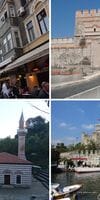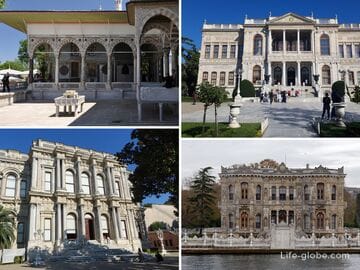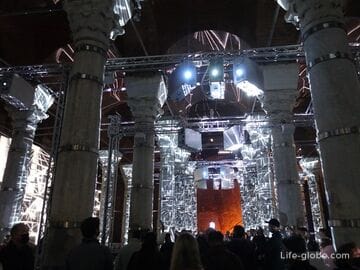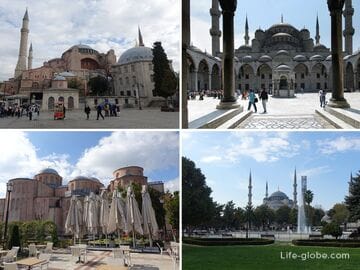Towers, fortresses, walls and gates, most of which were former fortifications of the city, can be distinguished in one of the categories of the diverse and full of sights of Istanbul.
Some of the former defensive structures are now museums and (or) observation decks.
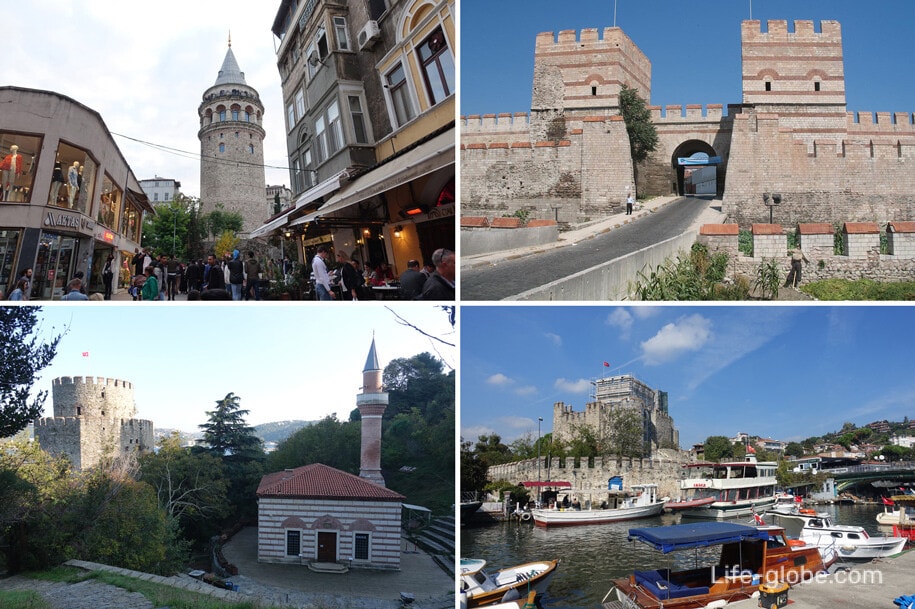
Towers, fortresses, walls and gates of Istanbul
Edikule Fortress (Museum and Golden Gate of Constantinople)
The fortress of Yedikule or Yedikule (Yedikule Hisari), which translates as "fortress of the seven towers" or "dungeon of the seven towers", was built in 1458 under Sultan Mahmed II the Conqueror.
The fortress of seven towers was created by adding three new towers and completely covering a section of the ancient walls of Constantinople, including the Byzantine twin towers and pylons that originally formed the main entrance gate to the city - the Triumphal Golden Gate (Altınkapı), built by the Roman emperors Theodosius I and Theodosius II.
The fortress was created as an official treasury fortress of the Empire, where each of the towers functioned as a repository of precious goods, documents, weapons, coins, gold and silver bars. In the 16th century, the treasury was moved to the inner part of the Topkapi Palace (Topkapı Sarayı) and after that the "Seven Towers" became a prison for high-ranking prisoners.
During the Napoleonic Wars, the fortress was the prison of many French prisoners of war, including the writer and diplomat Francois Pouqueville.
Today, the Yedikule Fortress is a museum of the Yedikule dungeon (Yedikule Hisarı Müzesi).
Yedikule is located near the waters of the Marmara Sea, in the old historical part of Istanbul, at the address: Yedikule, Yedikule Meydanı Sk. No:9, 34107 Fatih/Istanbul, Turkey.
The website of the Yedikule Museum: yedikulehisari.com.
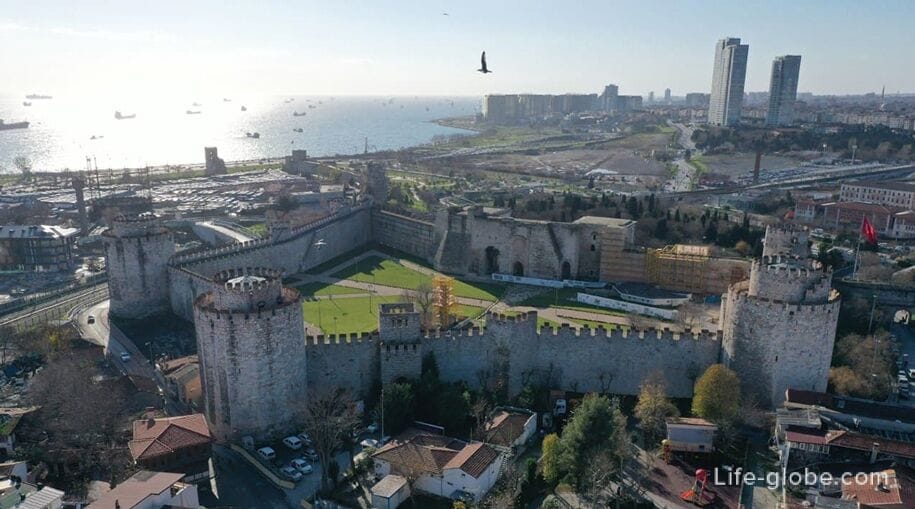
Bayazyt Tower
The Bayazyt Tower (Beyazıt Kulesi) is the former fire tower of the city, which is built of stone and is used for weather readings.
The tower was built of rare snow-white marble as a fire observation tower in 1828 by order of Sultan Mahmud II.
The tower is an image of neo-Ottoman architecture; it has a height of 85 meters and consists of four floors, each of which has its own name: "Sanjak floor" (where the flag was located), "basket floor" (where the basket hung towards the fire zone), "Alarm floor" (where officers gave signals in case of fire) and "Watch floor" (where the firemen on duty were located).
Today, the restored tower is illuminated every evening with lights of different colors, which are indicators of the weather for tomorrow (yellow light - fog; red light - snow; green light - rain and blue light - clear weather).
The tower is also open to visitors (by appointment), it houses a small museum and a spiral staircase, where 256 wooden steps, of which 180 lead to the observation deck and 76 - from the observation deck to the top of the tower.
Bayazyt Tower is located in the European part of Istanbul, in the Beyazyt quarter on the territory of Istanbul University, at the address: Beyazıt Mah Istanbul universitesi rektörlüğü, 34452 Fatih/Istanbul, Turkey.
The site of the tower with the terms of visits: beyazit-kulesi-anit-muzesi.

Walls and gates of Constantinople
The Walls and Gates of Constantinople (The Walls of Constantinople / Tarihi Istanbul Surları) are a series of defensive stone walls with gates that once surrounded and protected the city of Constantinople (today the city of Istanbul), surrounding it from all sides - both from the sea and from land.
Throughout history, the walls and gates have undergone numerous additions and modifications, and throughout their history they have been a great system of fortifications of antiquity.
The walls remained largely intact for most of the Ottoman period, until they began to be dismantled in the 19th century as the city grew. Some parts of the walls and gates have survived to the present day, and they have been restored.
Especially popular is:
- the restored section of the walls of Theodosius (teichos Theodosiakon), erected during the reign of Emperor Theodosius II (402-450), after whom they were named;
- Charisius Gate with a part of the wall (Charisius Kapısı), named after the nearby Early Byzantine monastery. It was the second most important gate of the city, after the Golden Gate. In Turkish, the gates are known as Edirnekapi and "Adrianople Gate" (Edirnekapı, "Adrianople Gate"), and it was here that Mehmed II made his triumphant entry into the conquered city;
- Belgrade Gate with a part of the wall (Belgrad Kapı), formerly known as the Xylokercos Gate or Xerokercos;
- Kabali Gate (Cibali Kapısı), which is not as outwardly remarkable as other preserved gates of the city;
- near the waters of the Sea of Marmara (at the Topkapi Palace) there are former Byzantine walls (Bizans surları). There is also a Marble Tower (Mermer Kule) near the Marmara Sea.
The remains of the former fortifications are located in the old historical part of Istanbul, in the Fatih district. The best of which and the "main ones" are located on the northern and southern (by the sea) outskirts of the district.
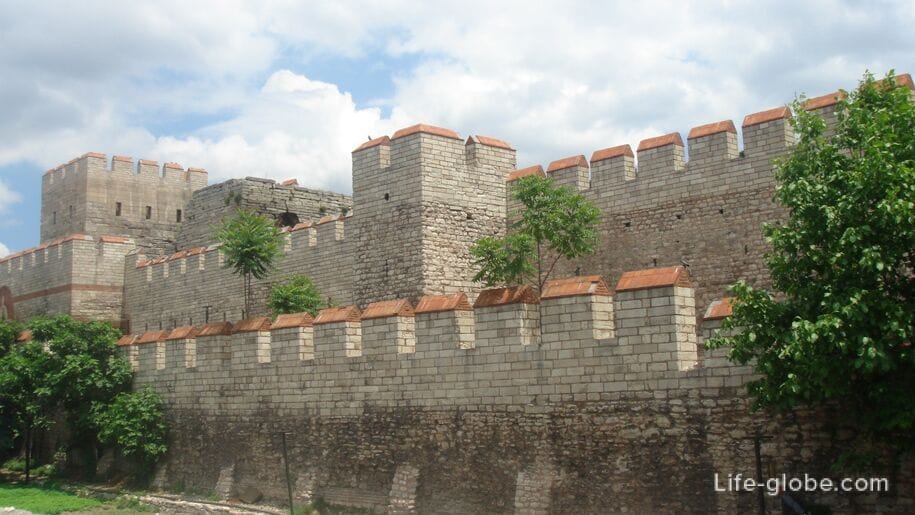
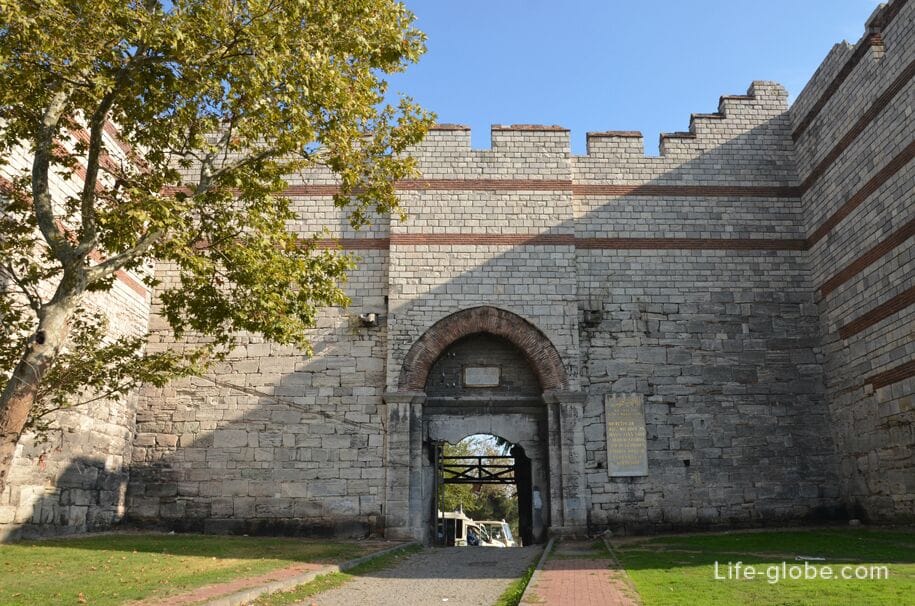

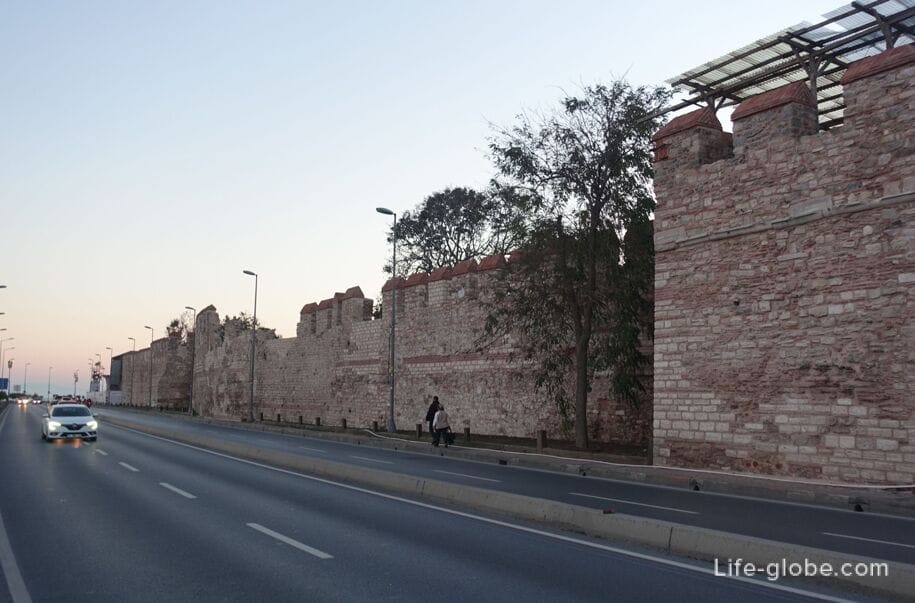
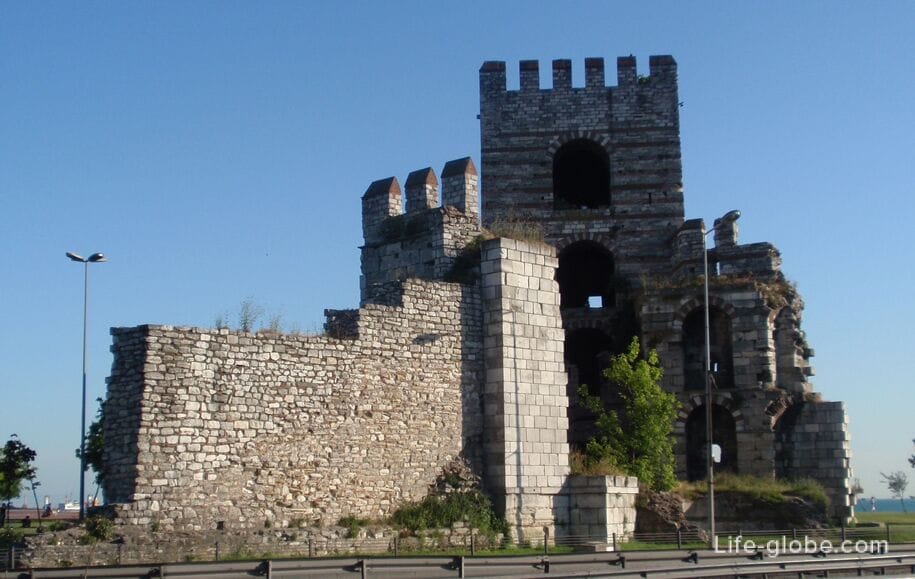
Galata Tower
The Galata Tower (Galata Kulesi) was erected by the Genoese in the middle of the fourteenth century (1348-1349) on top of a small hill and then it was part of the Galata defensive walls (small remnants of the walls can be seen near the tower).
During the Ottoman era, the tower was used for some time as a dungeon. The tower was also an observatory and a fire observation tower.
Today, the tower has been restored, is one of the symbols and one of the main attractions of Istanbul.
The tower is accessible to visitors. It houses a museum exhibition, and on the upper levels of the tower there are circular (indoor and outdoor) observation decks, giving beautiful panoramic 360-degree views of Istanbul.
Galata Tower is located in the historical center of Istanbul, in the European part of the city, in the Galata quarter of Beyoğlu district, near the main pedestrian street of the city - Istiklal (Istiklal caddesi), at: Bereketzade, Galata Kulesi, 34421 Beyoğlu/Istanbul.
Galata Tower website: muze.gov.tr/muze-detay . Learn more about the Galata Tower with photos and description...
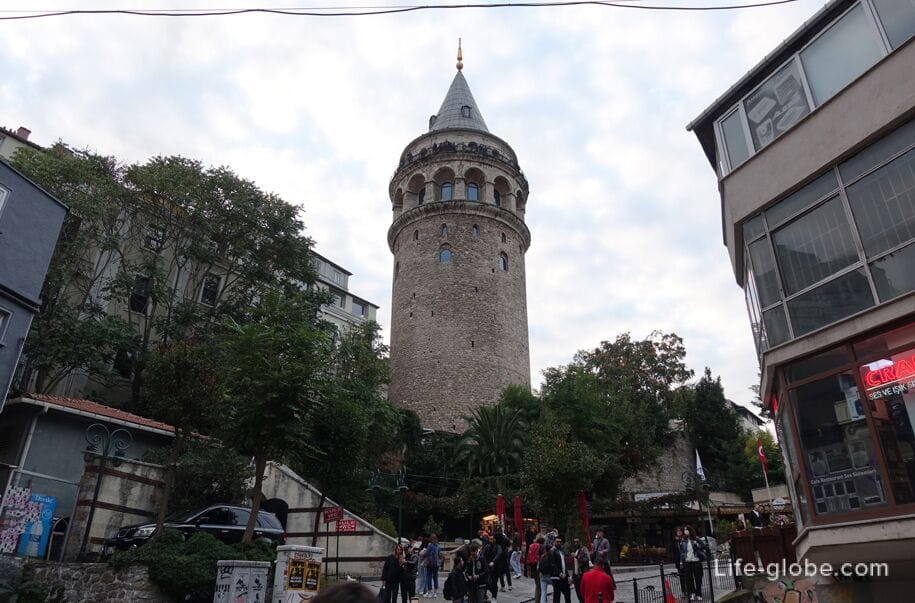
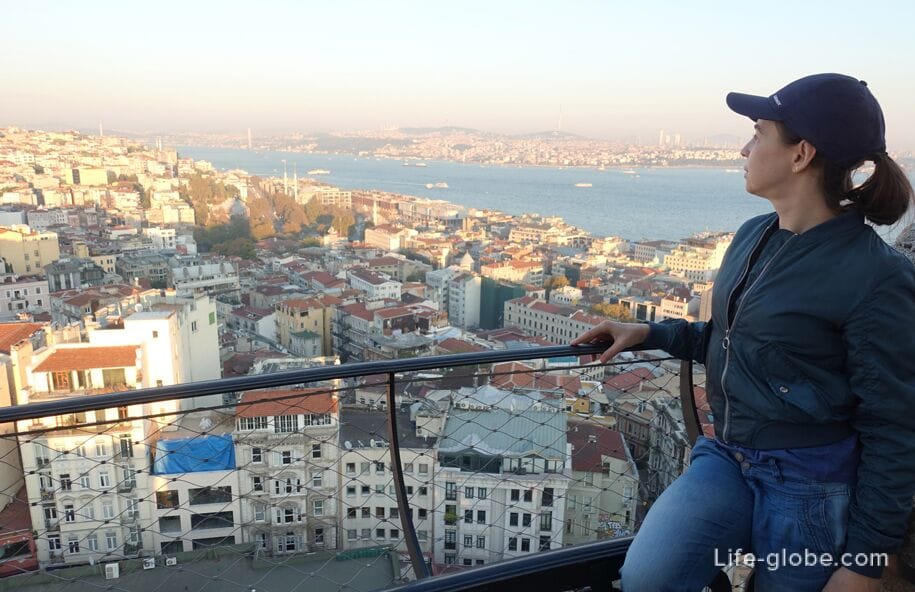
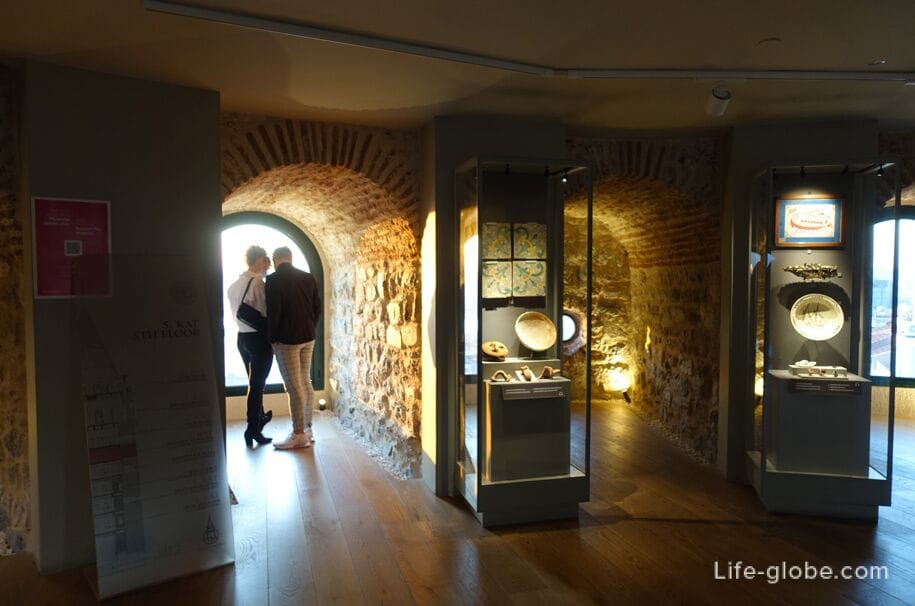
Dolmabahce Clock Tower
The Dolmabahce Clock Tower (Dolmabahçe Saat Kulesi) was commissioned by Sultan Abdulhamid II and designed by the court architect Sarkis Balyan in the period from 1890 to 1895.
The clock tower was made by the French watch house of Jean-Paul Garnier and installed by the court watchmaker Johann Mayer.
The clock tower is not the former fortifications or signal structures of the city, but is included in the general list of towers of Istanbul.
The tower is located near the entrance to the Dolmabahce Palace Museum (Dolmabahçe Sarayı).
Dolmabahce Palace is located on the European side of the Bosphorus in Istanbul, in the Besiktas district (Beşiktaş), at the address: Vişnezade, Dolmabahçe Cd., 34357 Beşiktaş/Istanbul, Turkey. More about Dolmabahce Palace...
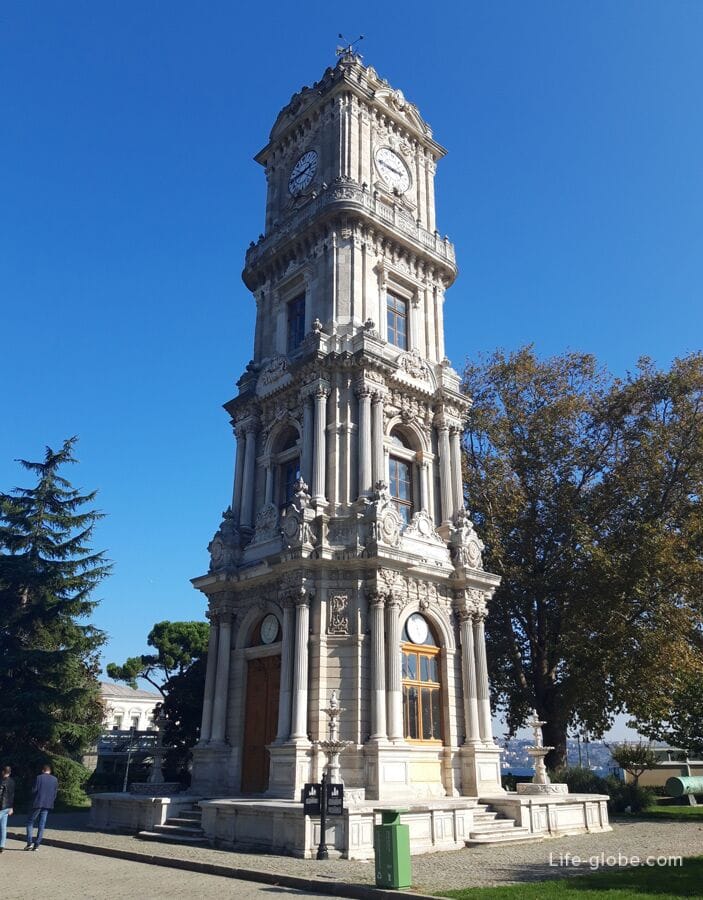
Rumelikhisar Fortress
Rumelikhisar or Rumeli Hisary (Rumeli Hisarı) is a medieval fortress, which is now one of the most striking former fortifications and defensive sights of Istanbul.
Rumeli Hisary Fortress was built during the Ottoman conquest of Istanbul in 1452, by order of Sultan Mehmed Fatih (the Conqueror). The fortress was intended to cut off Constantinople from aid and attack from the Black Sea and begin preparations for the conquest of the city to make it the new imperial capital.
Today Rumelikhisar is a museum, occupies an area of 30 hectares, surrounded by defensive walls with towers and gates. There are hiking trails on the territory of the fortress, there is a functioning mosque and a small cistern. The fortress offers panoramic views of the Bosphorus, Sultan Mehmed Fatih Bridge and the Asian part of the city.
The fortress is located on the European side of Istanbul, on the shore of the Bosphorus (in the narrowest part of the strait, which is 600 meters) opposite the Anadolu Hisarı fortress, located on the Asian side of the city. During the siege, two fortresses (Rumelikhisar and Anadolukhisar) worked together.
Address of Rumelikhisar Fortress: Rumeli Hisarı Yahya Kemal Caddesi No.:42 34470 Sariyer/ISTANBUL.
Website of the Rumelikhisar Fortress Museum: muze.gen.tr/muze-detay/rumeli . Read more about the Rumelikhisar Fortress with photos and description...
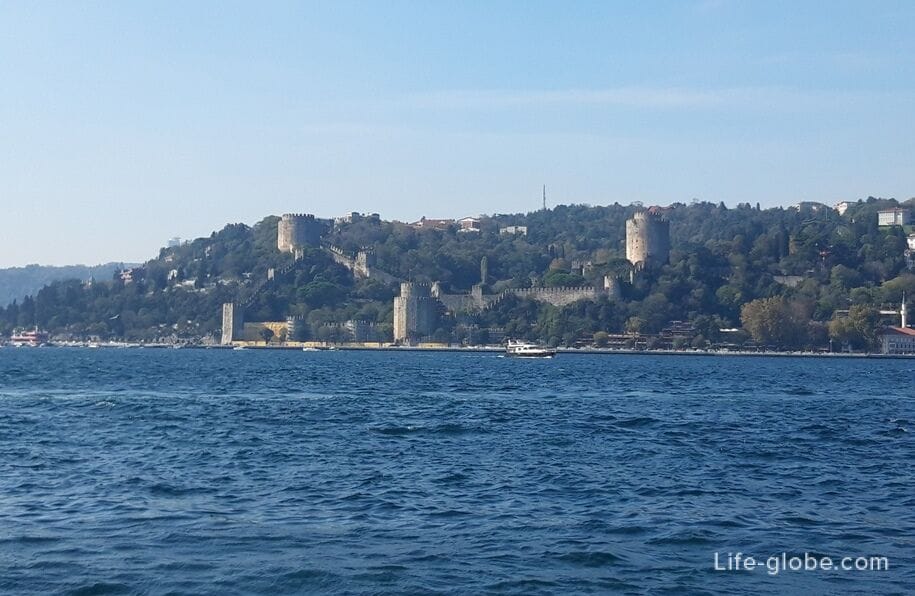

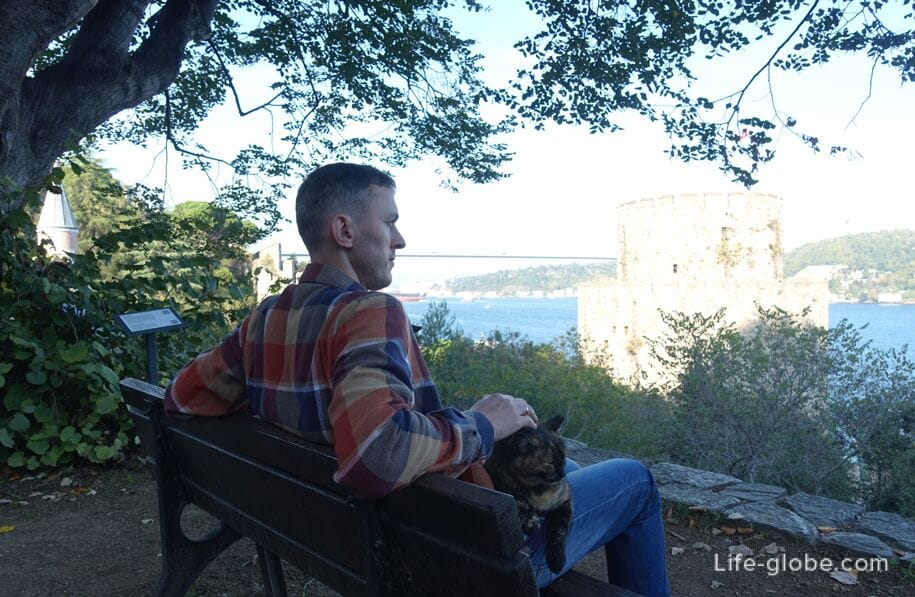
Anadolukhisar Fortress
Anatolian Fortress or Anadolu Hisarı Fortress is a small fortress (fort), which is one of the oldest architectural structures in Istanbul.
The fortress was built as a guard fort in the narrowest part of the Bosphorus Strait under the Ottoman Sultan Bayezid I in 1393-1394 and was intended, like the Rumelikhisar fortress, to prepare the siege of Constantinople.
After the Ottoman conquest of the city, Anadoluhisari served as a customs post and a military prison, and after a few centuries fell into disrepair.
Today, only a part of the fortress remains, and it is clearly visible from the Bosphorus and the nearby street.
The fortress is located on the Asian side of Istanbul near the Bosphorus Strait and near the Küçüksu Kasrı Palace. Read more about Anadolukhisar Fortress with photos and description...
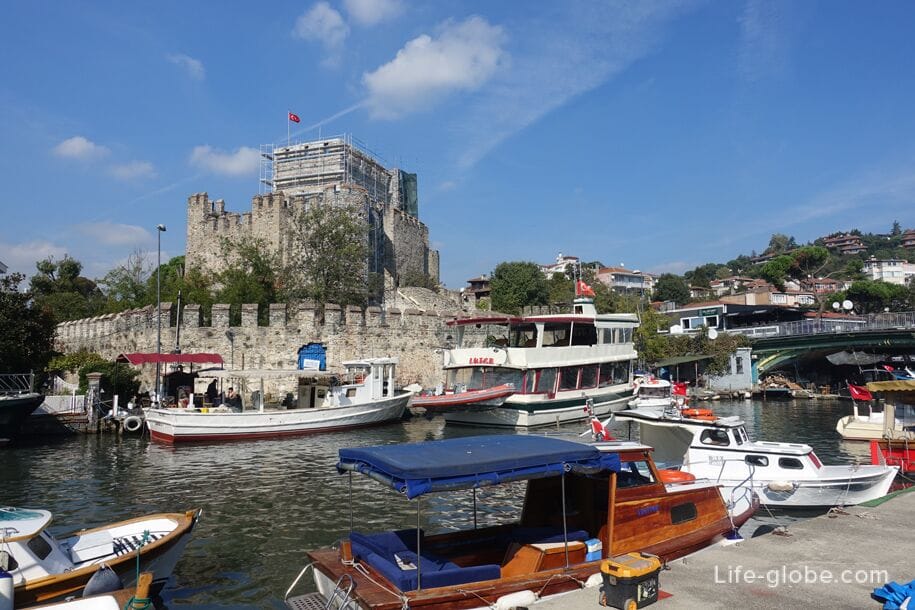
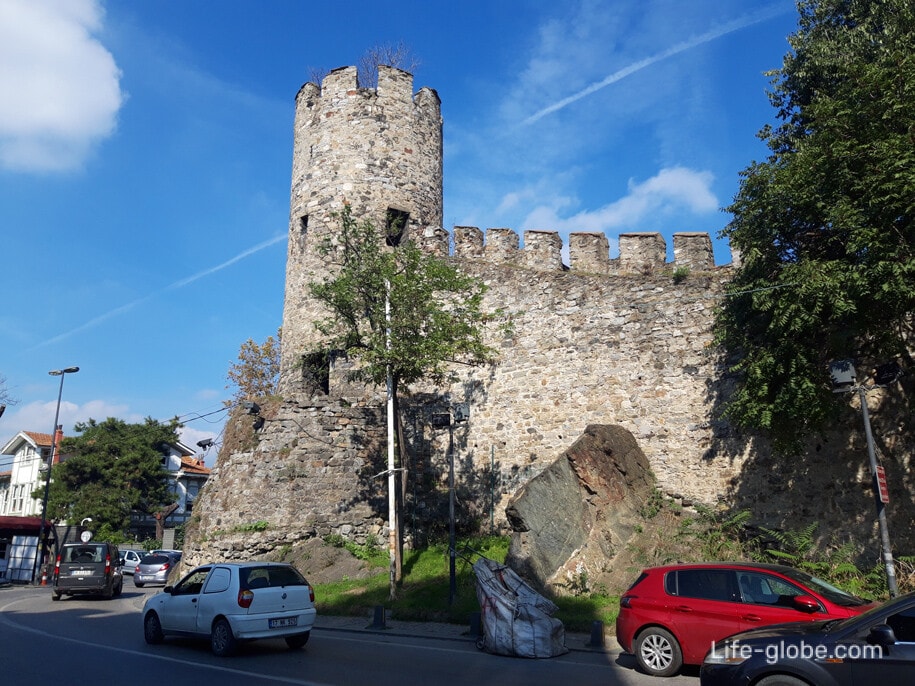
Maiden Tower
Maiden Tower (Kız Kulesi / Kyz Kulesi), also known as Leandrova Tower (Tower of Leandros) is a former lighthouse, which is now one of the main pearls and a symbol of Istanbul.
The tower is located on a small natural island in the waters of the Bosphorus Strait, a few meters from the coast of the Asian side of Istanbul - the Usküdar district.
The Maiden Tower is not a former fortification of the city, but is included in the general list of towers and signal structures of Istanbul.
Today the Maiden's Tower can be visited. Views of the Bosphorus and its shores open from here. Learn more about the Maiden Tower with photos, description and history...
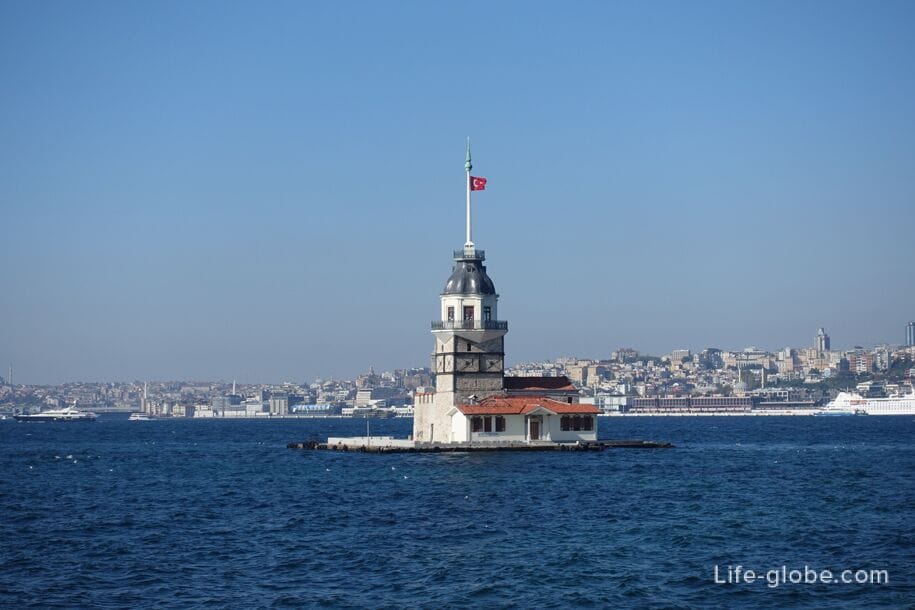
Fortresses and castles in the vicinity of Istanbul
Aidos Fortress
The fortress of Aydos (Aydos Kalesi) was located in a strategically important place - on the eastern border of the Byzantine Empire.
The fortress was built during the Eastern Roman Empire; it is believed that in the 11th and 12th centuries. Its name "Aidos", translated from Greek meant "Eagle".
Now a small part and ruins remain of the fortress.
The fortress is located on the border of the Asian part of Istanbul, on the Aidos hill.

Yoros Fortress in Anadolukavagi
The fortress of Yoros (Yoros kalesi) is located near Istanbul in the village of Anadolukavagi or Anadolu Kavagi (Anadolu kavağı). During the history (14th-15th centuries), the Genoese owned the fortress. From this, the fortress has two more names: the Genoese fortress (Ceneviz Kalesi) and the Anadolukavagi fortress (Anadolukavağı Kalesi).
The fortress was used by the Greeks and Phoenicians until the Byzantine period for trade and military purposes.
Today, small parts of the former fortress remain in the form of two towers and parts of the walls.
The fortress is located on the Asian side, on a hill near the waters of the Bosphorus.
The fortress and the hill offer panoramic views of the Bosphorus and the surrounding area.
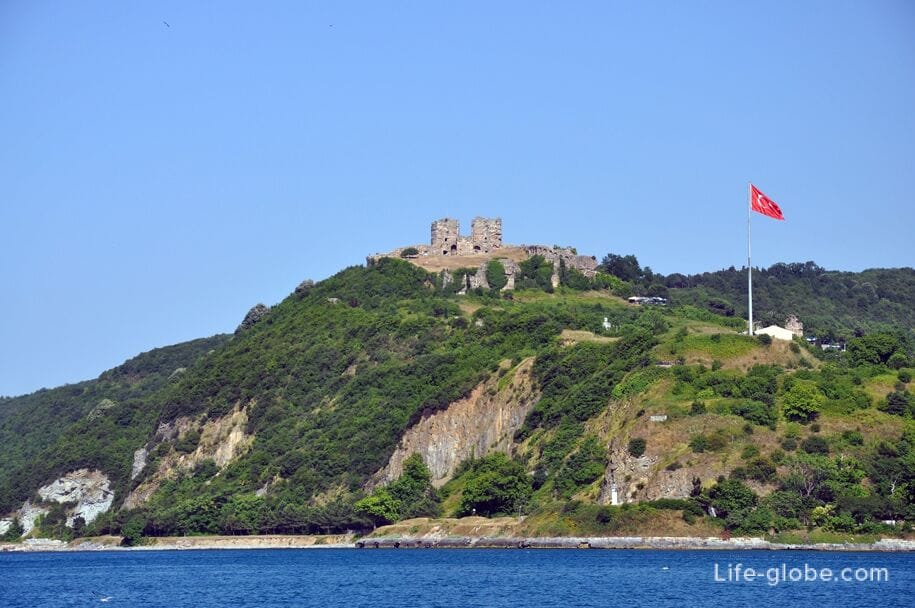

Garipche Fortress
Garipce Fortress (Garipçe Kalesi) today is a small remnant of a former Ottoman-era fortress with walls located on the shore of the Bosphorus, in a small and very charming village of the same name near Istanbul - Garipce (on the Garipce ridge).
The fortress was built under Sultan Mustafa III in 1757-1774, on the rocks in a bay called Lycion Limen (Lycian Harbor).
For some time the castle was used by the Turkish armed forces.
From the territory of the fortress and the immediate surroundings there are wonderful panoramic views.
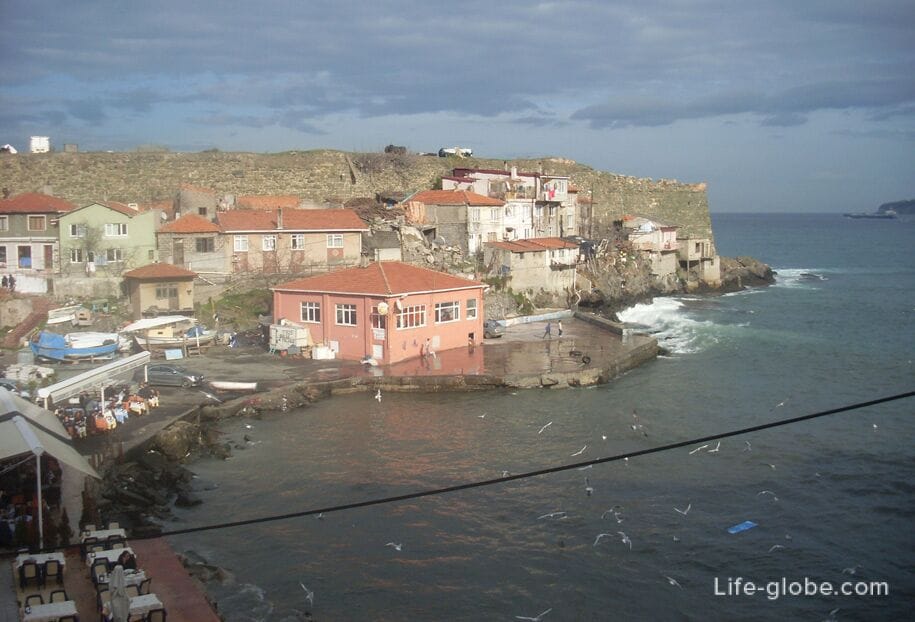
Rumeli Lighthouse and Artillery Fortress
Rumeli Lighthouse and Artillery Fortress (Rumeli Feneri Topçu Kalesi) is a lighthouse and fortress located close to each other, on the European side, near the waters of the Black Sea in the village of Istanbul province.
The Rumeli Feneri Lighthouse is historic and is still in use. The lighthouse was built by the French to ensure the safe navigation of French and British warships entering and leaving the Black Sea during the Crimean War (1853-1856). The lighthouse was commissioned on May 15, 1856, together with its neighbor, the Anatolian Lighthouse (Anadolu Feneri), which is located opposite - on the Asian side. The lighthouse was operated by the French until 1933, when the 100-year concession was cancelled and power passed to the Turkish authorities.
It is the tallest lighthouse in Turkey; it has a height of 30 meters and the shape of a two-stage octagonal prism.
The lighthouse is open to the public as a historical place. Inside the lighthouse is the grave of the Muslim saint Sarah Saltuk.

Today's remains of the Rumeli Feneri Kalesi fortress have a small part of the wall, small towers and arched gates.
There are beautiful views from the territory and surroundings.
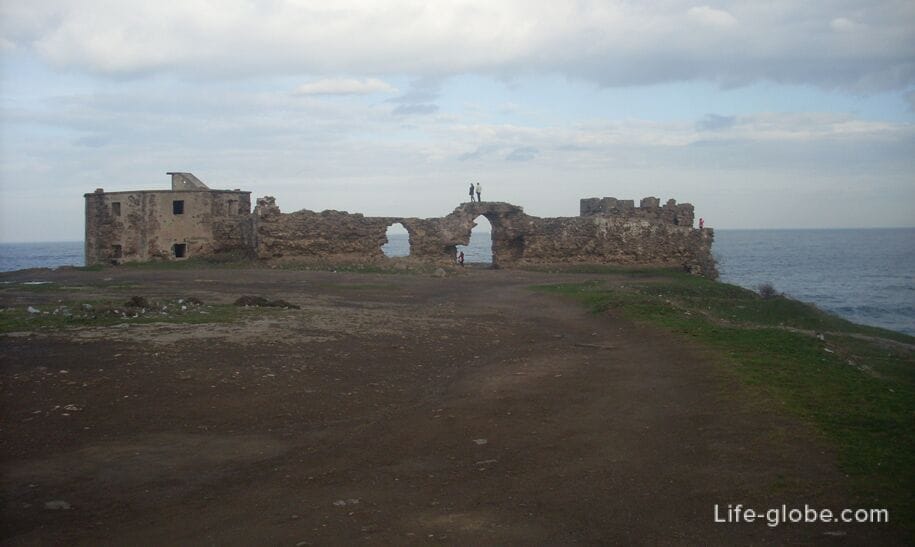
Riva Fortress
The Riva Kalesi Fortress is the remains of a former Byzantine coastal fortification located on a hill where the Riva Stream flows into the Black Sea in Riva.
The Ottoman Sultan Bayezid I mentioned the importance of the occupation of the fortress after the capture of the neighboring castles of Yoros and Shile in 1391. The castle was first recorded in the archives as Revan Kalesi in 1778-1779.
Today, parts of the walls of the fortress remain.
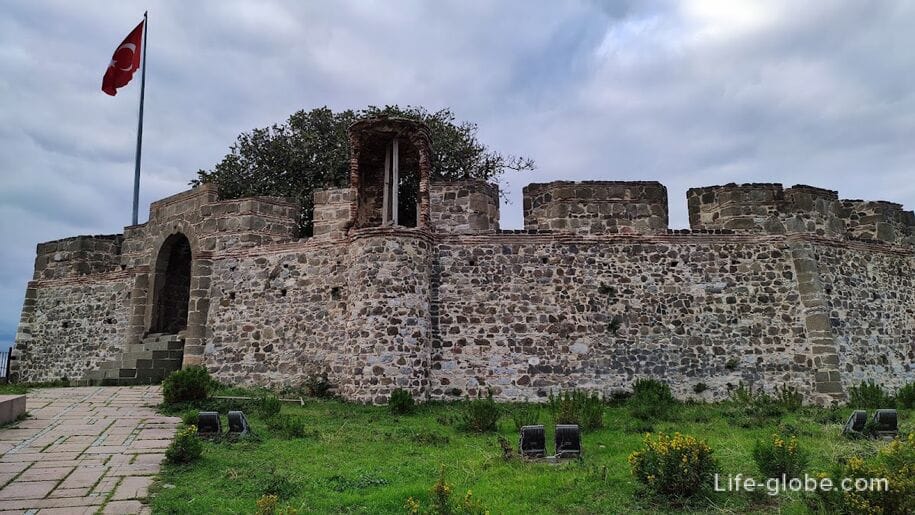
Schiele Fortress
The fortress of Shile (Şile Kalesi) or the castle of Ocaklı Ada (Ocaklı Ada Kalesi) has two different versions regarding its history.
The fortress was built as a watchtower, according to the statement adopted today, by the Genoese 2,000 years ago. According to another statement, the fortress was built by the Byzantines, and then used by the Ottomans.
The fortress, captured by the Genoese in 1305, was conquered by the Ottoman army under the command of Yildirim Bayezid in 1396.
The former fortress has a square shape and a height of 12 meters. During the construction of the 4-storey fortress, white limestone was used. The first floor of the fortress was used as a cellar, and the remaining floors were designed to accommodate 20 soldiers.
The fortress is located in the resort village of Şile on the Black Sea coast of Turkey. There are also beaches in Shila.
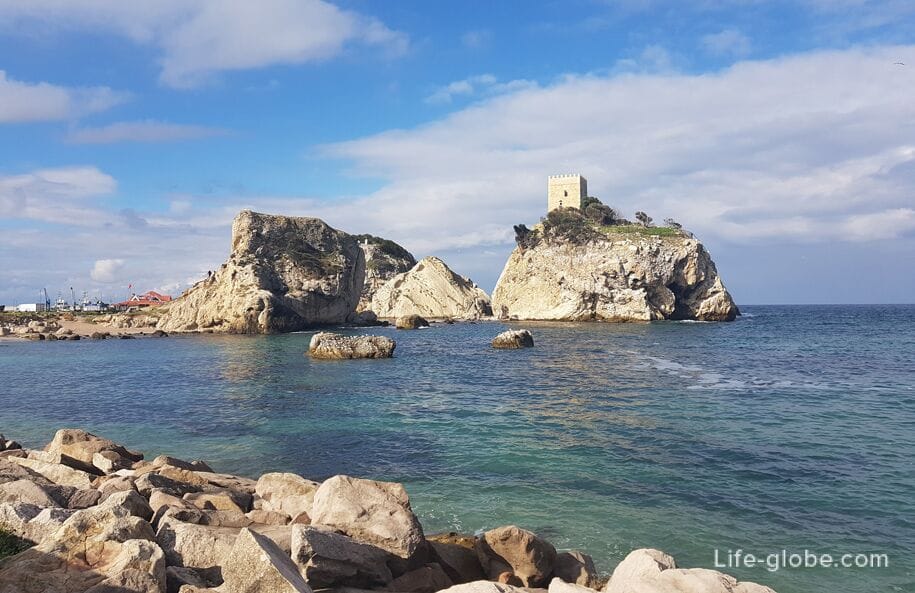
All accommodation facilities in Istanbul, including in the historical center, on the European and Asian sides of the city, can be viewed and booked here




